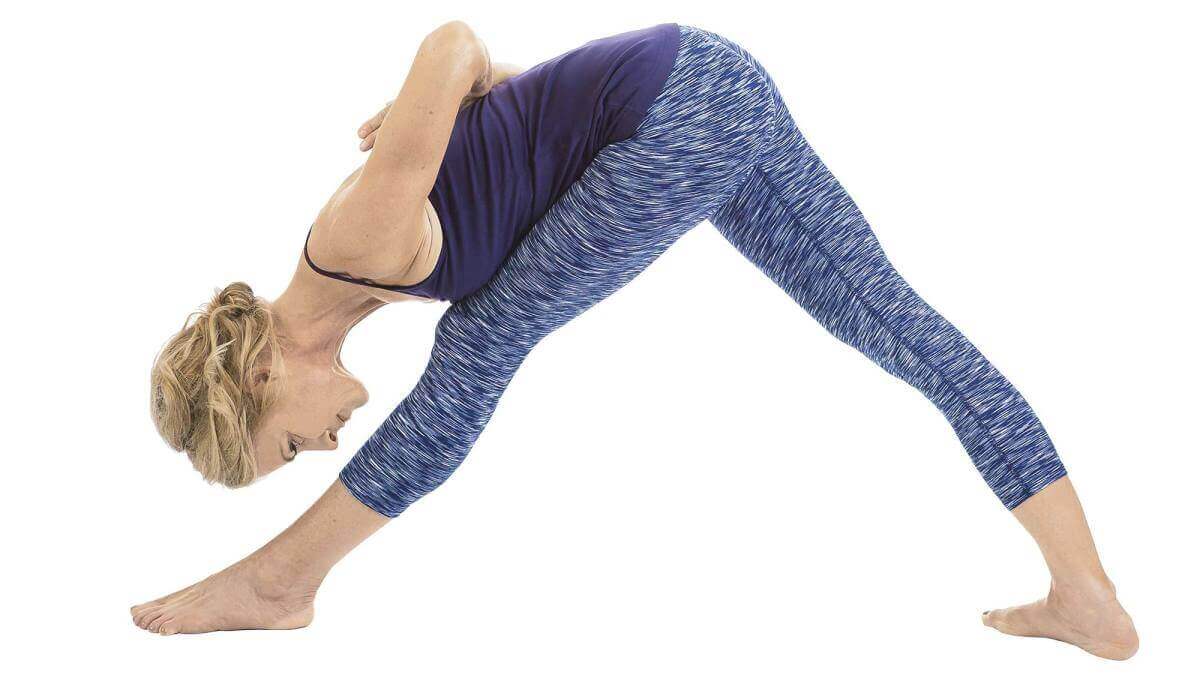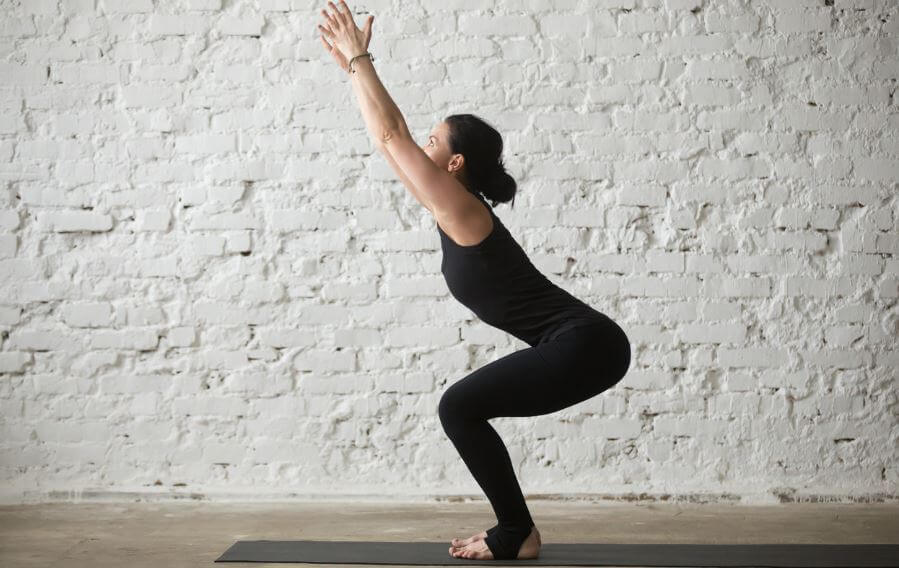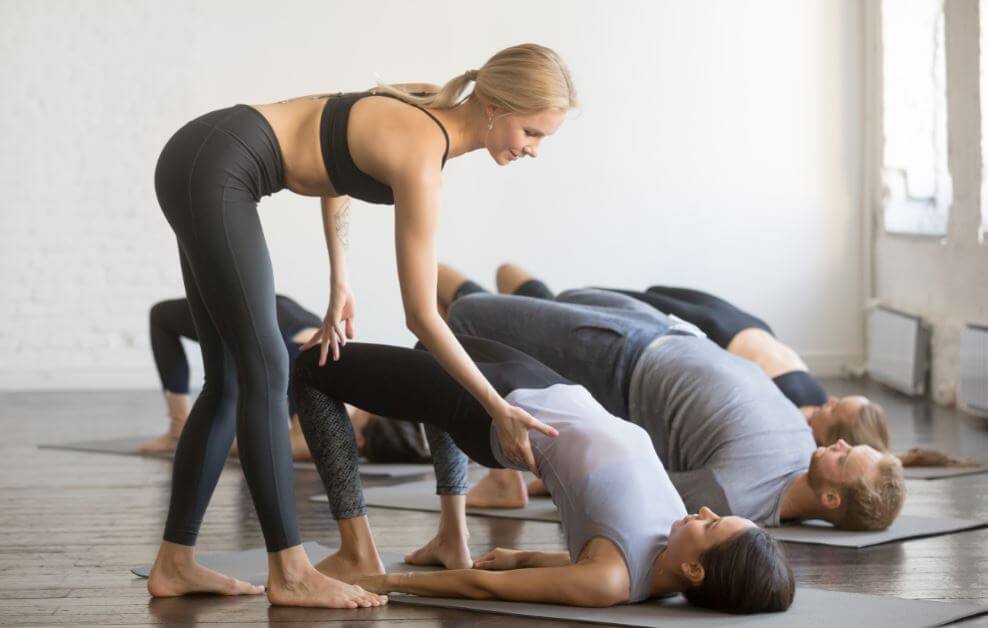Yoga Postures to Improve Weightlifting

Yoga is definitely one of the best ways to reduce stress. However, incorporating yoga postures into your workouts can also be very beneficial when it comes to improving your performance at the gym. That’s why we’ve decided to prepare the following article to share the best yoga postures to improve weightlifting performance.
The combination of any sport and yoga allows you to simultaneously work your body and your mind. By combining yoga and sports you’ll improve your flexibility, develop strength, prevent muscle pain and relieve muscle stress.
If you’ve ever attended a yoga class, you probably know that a lot of the practice concentrates on breathing. This not only helps you to relax, but it also helps you to develop breathing habits that you can apply during your training routines.
Concentrating on your breathing and learning to breathe deeply will help you provide an efficient oxygen supply for your body. This will also assure the optimal functioning of your muscles.
An ideal complement for lifting weights
Flexibility is an important component when it comes to weightlifting, however, it tends to be overlooked. The range of motions around the joints is important when it comes to performing heavy-duty movements safely and effectively. Flexibility can be improved with yoga.
If you’ve never practiced yoga before, you may have a difficult time starting, even with several years of athletic training. A yoga session cannot be compared to classic gym exercises since it provides peace and tranquility.
Yoga can also help athletes develop the stability and flexibility that’s required for certain movements.
Here are some yoga postures that will improve your flexibility and mobility. They’ll also help you to prevent injuries and reach your fitness goals. Read along and choose your favorite!
Three yoga postures that can improve your weight lifting
Parsvottanasana
This position will test your balance while improving your strength. When performing the Parsvottanasana, you have to support your weight with one hand and one foot, while using your core to prevent yourself from falling.
In order to perform this posture, you have to work your core muscles and feel your capacity to grow and balance your body. Keep the outer edge of your grounded foot strong, and lift your hips in the air in order to create the feeling of lightness.

Utkatasana
The second yoga position to improve weightlifting is Utkatasana. In order to carry out this exercise, start with your feet together and your arms around your body. Take a breath and raise your arms towards the sky.
When you exhale, bend your knees and lower your buttocks towards the floor, as if you were going to sit on a chair. Your knees should not move past your ankles and your back should remain straight. This position is ideal for toning the entire body: buttocks, thighs, calves, ankles, and feet.

Ardha Setu Bandhasana
The third yoga position can be used to strengthen and tone your legs, buttocks, and thighs. It can also help to regulate the thyroid gland.
In order to carry it out, lie on your back, put your feet on the floor and lift your pelvis. Place your hands under the lumbar area of your spine in order to support your body’s weight. Breathe a dozen times before slowly bringing your pelvis back down. You can repeat this exercise once or twice.

In conclusion, yoga is about developing connections between your body and your mind through a combination of postures, controlled breathing, and meditation. Once you learn how to develop your concentration, you’ll be able to use it to improve your weightlifting. Why don’t you try to introduce a few of these postures into your workout routine?
Yoga is definitely one of the best ways to reduce stress. However, incorporating yoga postures into your workouts can also be very beneficial when it comes to improving your performance at the gym. That’s why we’ve decided to prepare the following article to share the best yoga postures to improve weightlifting performance.
The combination of any sport and yoga allows you to simultaneously work your body and your mind. By combining yoga and sports you’ll improve your flexibility, develop strength, prevent muscle pain and relieve muscle stress.
If you’ve ever attended a yoga class, you probably know that a lot of the practice concentrates on breathing. This not only helps you to relax, but it also helps you to develop breathing habits that you can apply during your training routines.
Concentrating on your breathing and learning to breathe deeply will help you provide an efficient oxygen supply for your body. This will also assure the optimal functioning of your muscles.
An ideal complement for lifting weights
Flexibility is an important component when it comes to weightlifting, however, it tends to be overlooked. The range of motions around the joints is important when it comes to performing heavy-duty movements safely and effectively. Flexibility can be improved with yoga.
If you’ve never practiced yoga before, you may have a difficult time starting, even with several years of athletic training. A yoga session cannot be compared to classic gym exercises since it provides peace and tranquility.
Yoga can also help athletes develop the stability and flexibility that’s required for certain movements.
Here are some yoga postures that will improve your flexibility and mobility. They’ll also help you to prevent injuries and reach your fitness goals. Read along and choose your favorite!
Three yoga postures that can improve your weight lifting
Parsvottanasana
This position will test your balance while improving your strength. When performing the Parsvottanasana, you have to support your weight with one hand and one foot, while using your core to prevent yourself from falling.
In order to perform this posture, you have to work your core muscles and feel your capacity to grow and balance your body. Keep the outer edge of your grounded foot strong, and lift your hips in the air in order to create the feeling of lightness.

Utkatasana
The second yoga position to improve weightlifting is Utkatasana. In order to carry out this exercise, start with your feet together and your arms around your body. Take a breath and raise your arms towards the sky.
When you exhale, bend your knees and lower your buttocks towards the floor, as if you were going to sit on a chair. Your knees should not move past your ankles and your back should remain straight. This position is ideal for toning the entire body: buttocks, thighs, calves, ankles, and feet.

Ardha Setu Bandhasana
The third yoga position can be used to strengthen and tone your legs, buttocks, and thighs. It can also help to regulate the thyroid gland.
In order to carry it out, lie on your back, put your feet on the floor and lift your pelvis. Place your hands under the lumbar area of your spine in order to support your body’s weight. Breathe a dozen times before slowly bringing your pelvis back down. You can repeat this exercise once or twice.

In conclusion, yoga is about developing connections between your body and your mind through a combination of postures, controlled breathing, and meditation. Once you learn how to develop your concentration, you’ll be able to use it to improve your weightlifting. Why don’t you try to introduce a few of these postures into your workout routine?
All cited sources were thoroughly reviewed by our team to ensure their quality, reliability, currency, and validity. The bibliography of this article was considered reliable and of academic or scientific accuracy.
-
Buil Cosiales, P. (2006, June). El yoga disminuye la incapacidad y el dolor en los pacientes con lumbalgia crónica. FMC Formacion Medica Continuada En Atencion Primaria. https://doi.org/10.1016/S1134-2072(06)71795-9
This text is provided for informational purposes only and does not replace consultation with a professional. If in doubt, consult your specialist.








